Strasbourg is the capital of Alsace, now better known as the Grand-Est region of France. Bordering Germany and Switzerland it offers an exciting mix of French and German influences in its architecture, its cuisine and cultural offerings. We have prepared the perfect itinerary for a one day trip for you that covers all of best of what Strasbourg has to offer.
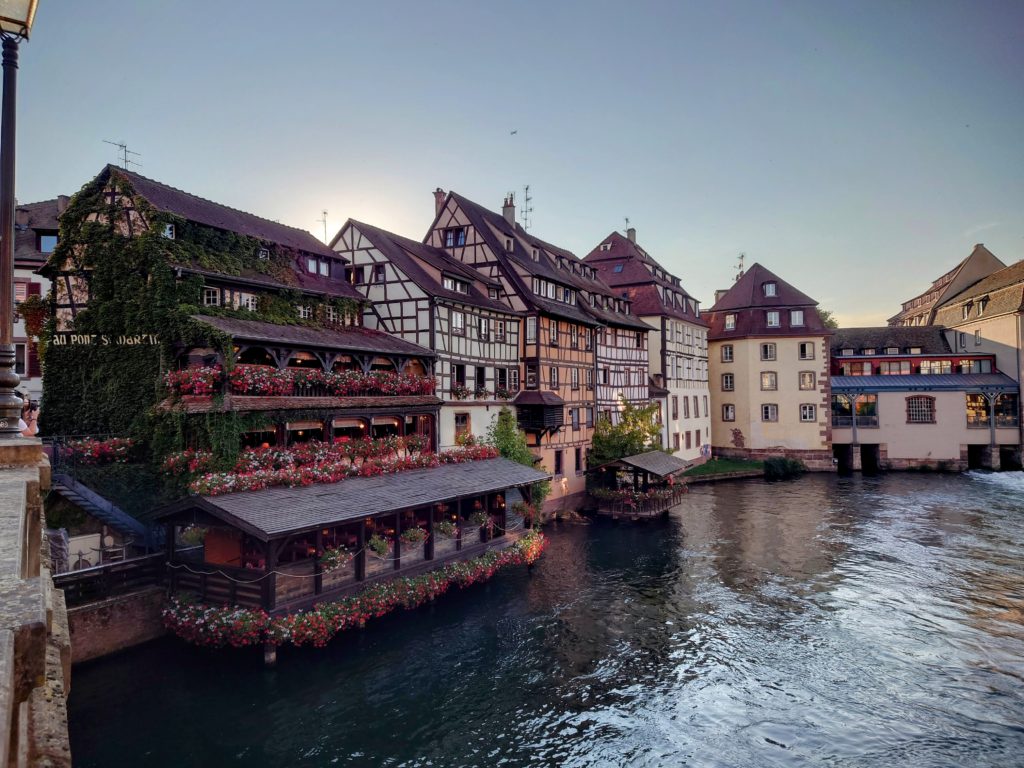
How to get there:
By Plane: You can reach Strasbourg via the Strasbourg International Airport (SXB) that is located 10 minutes from Strasbourg’s city centre by train. The train runs every 15 minutes to and from Strasbourg’s central station. You can also take a taxi, shuttle bus, or tram (Tram Line B) to reach the city center from the airport.
By Train: Strasbourg is well-connected to the European rail network. The main train station in Strasbourg is Gare de Strasbourg, which is centrally located and offers high-speed train services (TGV) to and from major French and European cities, including Paris, Lyon, Brussels, and Frankfurt.
By Bus: Long-distance bus companies like FlixBus and Eurolines offer services to Strasbourg from various European cities. The bus station in Strasbourg is located at Place de l’Étoile, near the city center.
Where to stay: We camped at the four-star campsite Camping de Strasbourg and can highly recommend the it. Not only does it offer pitches for tents, motorhomes and caravans but also wooden chalet and trailer stays. Below in our itinerary you can read more about our stay at the campsite and what it has to offer. Alternatively, you could stay at the luxurious Hôtel LÉONOR in Petit France, the most beautiful district of Strasbourg.
When to come: We visited Strasbourg in September and experienced a very hot summer weather with no rain. Spring and summer are definitely good options to visit Strasbourg, which does not seem to get too crowded with tourists. However, we’d recommend to visit Strasbourg during Christmas season especially, as its Christmas market (Christkindelsmärik) is one of the most beautiful in Europe. It begins in late November and lasts until the end of December.
How long to stay: Strasbourg can be covered in one day. However, if you would like to discover Strasbourg more in depth by visiting some of its museums or doing the European walk that will take you to major European institutions all across Strasbourg, we recommend you stay for two days.
Arriving at Camping de Strasbourg

The four-star campsite Camping de Strasbourg offers pitches for tents, motorhomes and caravans but also wooden chalet and trailer stays. A tram and bus stop is close-by and will take you to the city center within 10 minutes. The campsite itself is surrounded by lots of greenery and includes an outdoor pool, a volleyball playing field, a café and restaurant as well as a small grocery shop. You will also find a Lidl and a Turkish bakery within walking distance. We paid 27€ for our car pitch. for one night.
Have breakfast at L’atelier 116

L’Atelier 116 is a bakery and café in the beautiful district of Petite France. For us a visit to France is almost always tied to enjoying lots of French bread and pastries. No better way to achieve this than to start your day trip at L’Atelier 116, which offers you organic French bageutte and breads, tartes, croissants, the famous Kouglof or Kougelhopf and other typical Alsatian delicacies. They open from 7am onwards and it can get crowded during lunchtime since it’s a famous spot for picking up lunch.
Head to Grand-Isle
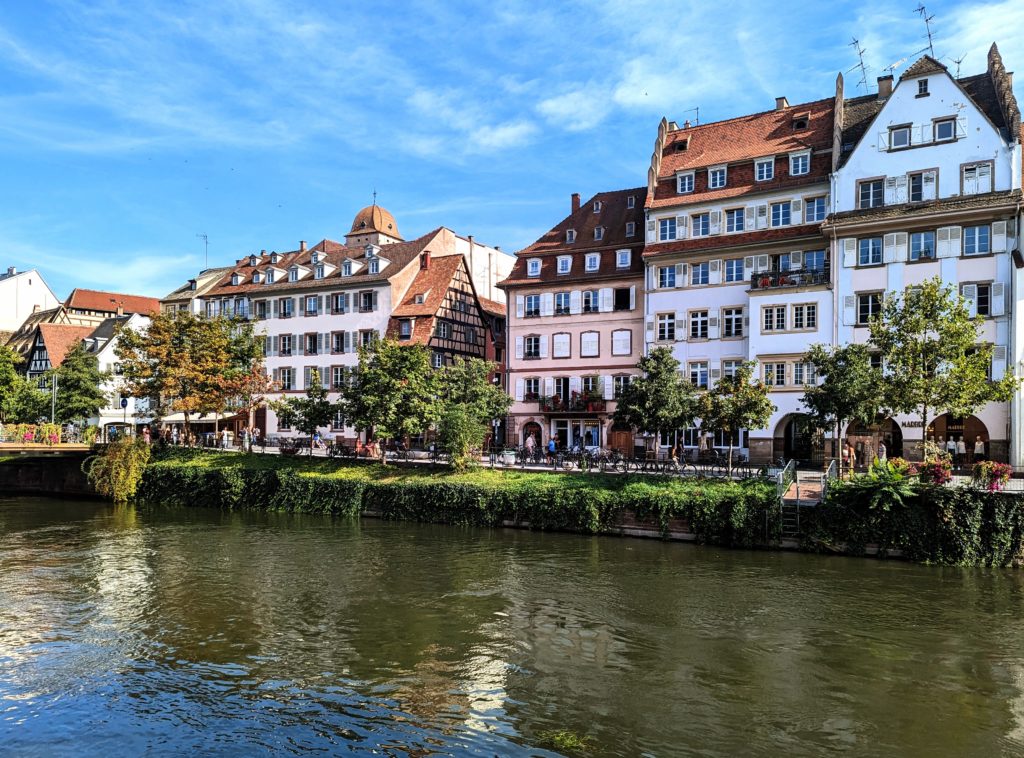
Grand Isle forms the historic center of Strasbourg. The name derives from the fact that it is on one side surrounded by the main channel of the III River and on the other side by the Canal du Faux-Rempart, a canalised arm of the same river. In 1988 it was the first city center to be named a UNESCO world heritage site. Place Kléber is at the center of Grand Isle, the Cathedral is in the south and Petite France in the west. Frand Isle also houses the city’s most imposing hotels and palaces including Palais Rohan and the Hotel de Hanau (now the city hall).
Visit the Strasbourg Cathedral

The Cathedral of our Lady of Strasbourg is the gem of the Old Town. After 400 years of construction it was finished in 1439. You can climb up the 142 metre tower and enjoy the view of the city of Strasbourg. If the sky is clear you can even see Germany. Once you enter the Cathedral take a look at the beautiful window above the entrance. The entrance to the cathedral is free. Climbing up the 322 steps requires a ticket, which is 8€ per person.
Don’t miss the Astronomical clock
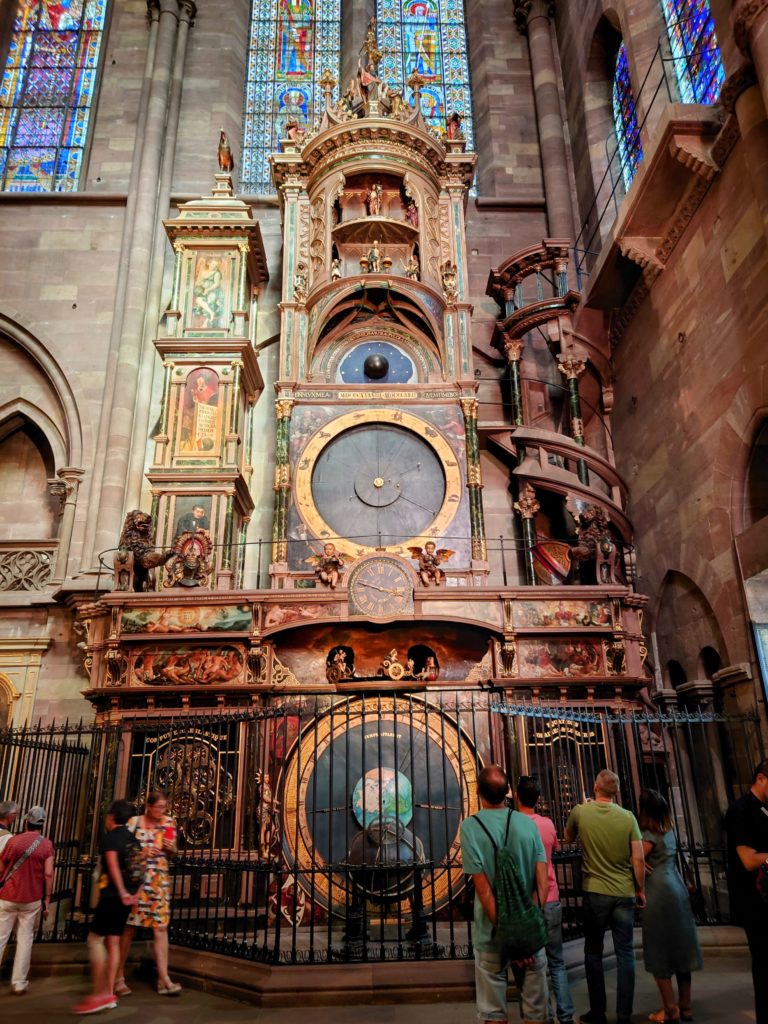
If you visit the Strasbourg Cathedral, you will also get to admire the astronomical clock, the most famous attraction of Strasbourg. Every day at 12:30pm the automated animations of the clock take place and present the apostles’ parade before Christ. So make sure to be in the Cathedral (on the right side behind the altar) around lunchtime to not miss the clock’s performance. The entrance to the Cathedral and therefore the astronomical clock is free of charge.
Discover the Kammerzell House
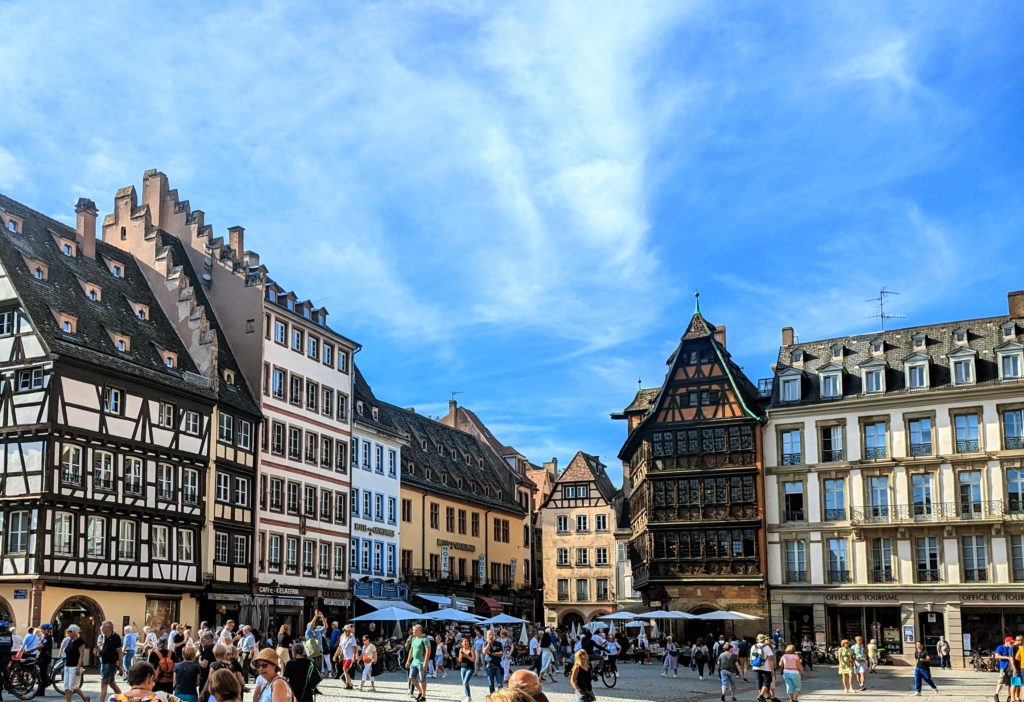
The Kammerzell House used to be a merchant mouse and is now a famous restaurant. There are dining rooms on several floors, where you can admire the lavish decor and the long history that fills these rooms. Even though we did not go in, it’s still nice to take a look at this 15th century Renaissance building with its steep roof, secular sculptures, crown glass windows, all the signs of the zodiac and important historical figures such as Caesar.
Stop by at Palais Rohan
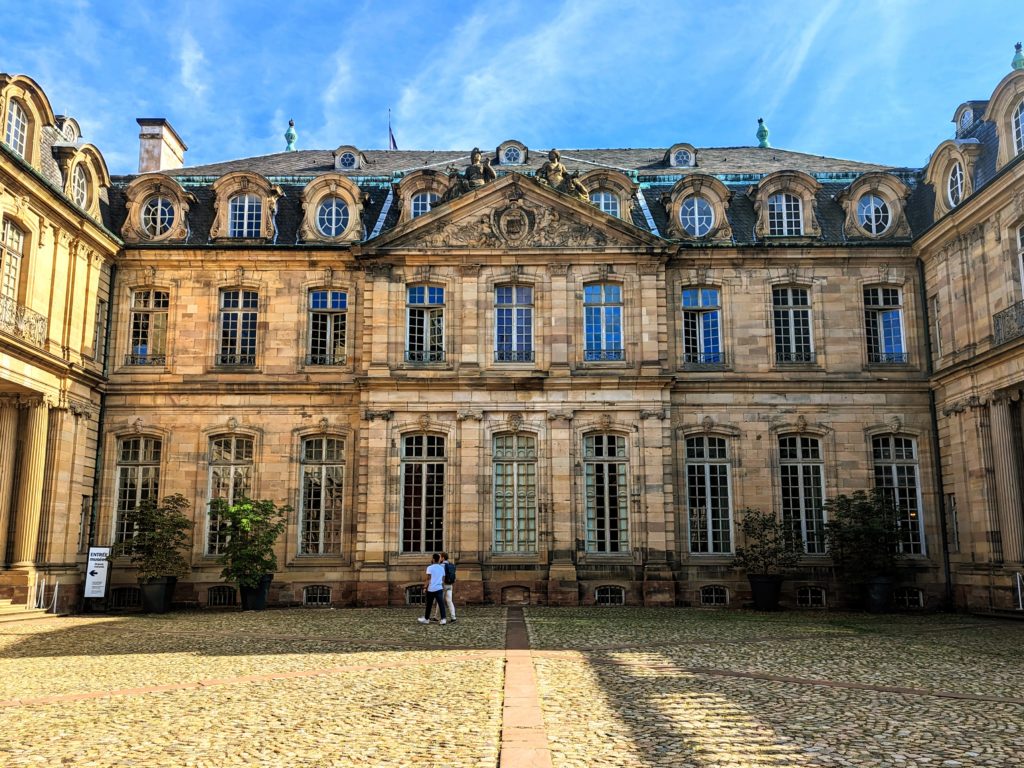
Palais Rohan was build in 1742 and used to house the four cardinals of Rohan. Afterwards it became a city hall and then a royal palace. The architecture is inspired by Parisian townhouses with simplicity and harmony in its proportions and alignments. Even if you don’t want to visit one of the three museums that are housed in Palais Rohan (The Archoelogical Musem, The Museum of Fine Arts and The Museum of Decorative Arts), you should still stop by the building and walk through its courtyard.
The Neubau and Place Gutenberg
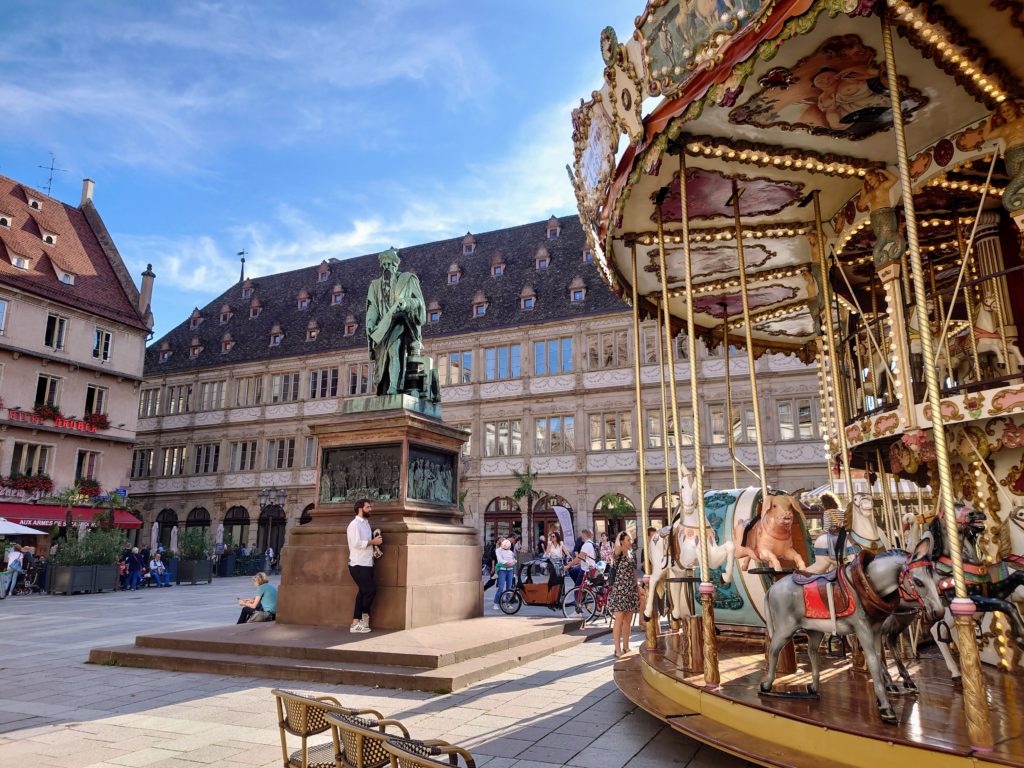
On the Place Gutenberg square, which used to be the political and administrative centre, you will find the Neubau, a late 16th century building that was built in a cut stone. It became the Chamber of Commerce in 1792. The Neubau is the most representative example of Renaissance architecture in the Alsatian capital. During the holidays it is beautifully illuminated. You can also find the statue of Gutenberg, the inventor of the printing press, on the same square, hence the name. It’s a great place to enjoy a drink in one of its many outdoor cafés.
Kleber Square
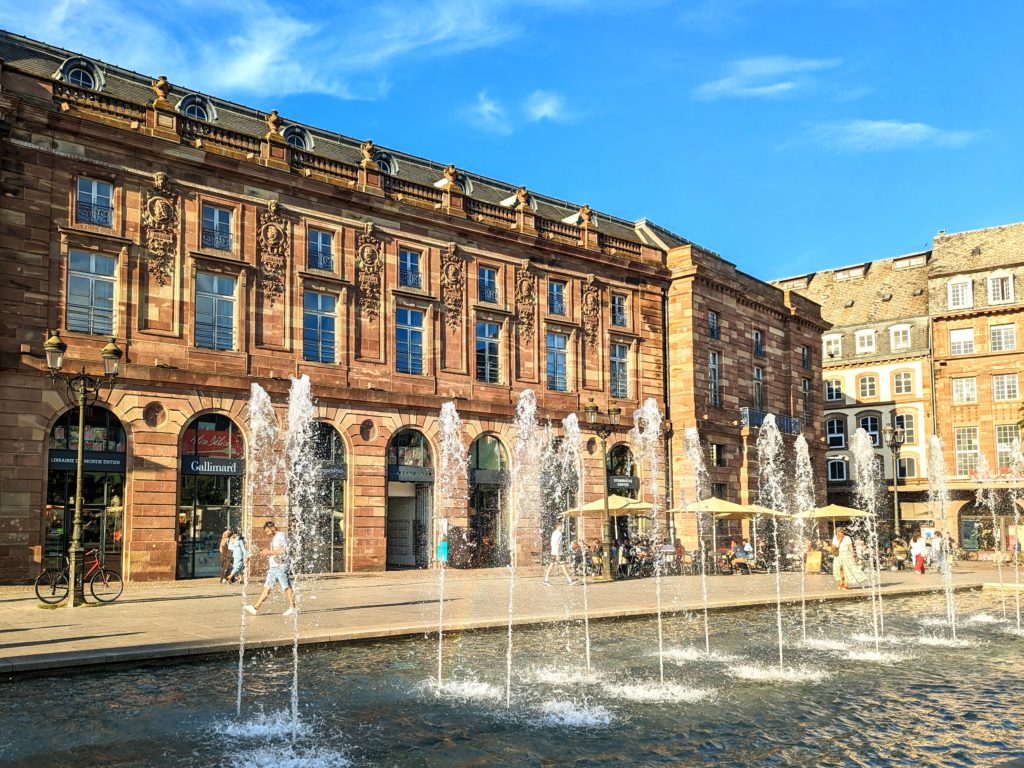
At major cultural and sporting events, Strasbourg’s inhabitants gather at Place Kleber. This is also where the tallest Christmas tree is placed during the Christmas season. The square has a lot of flowerbeds and water fountains and it is nice to enjoy a drink to soak up its atmosphere. You will also see the Aubette building on the square, which is a place where soldiers used to pick up their assignments early in the morning.
Try a Kougelhopf at Caouette
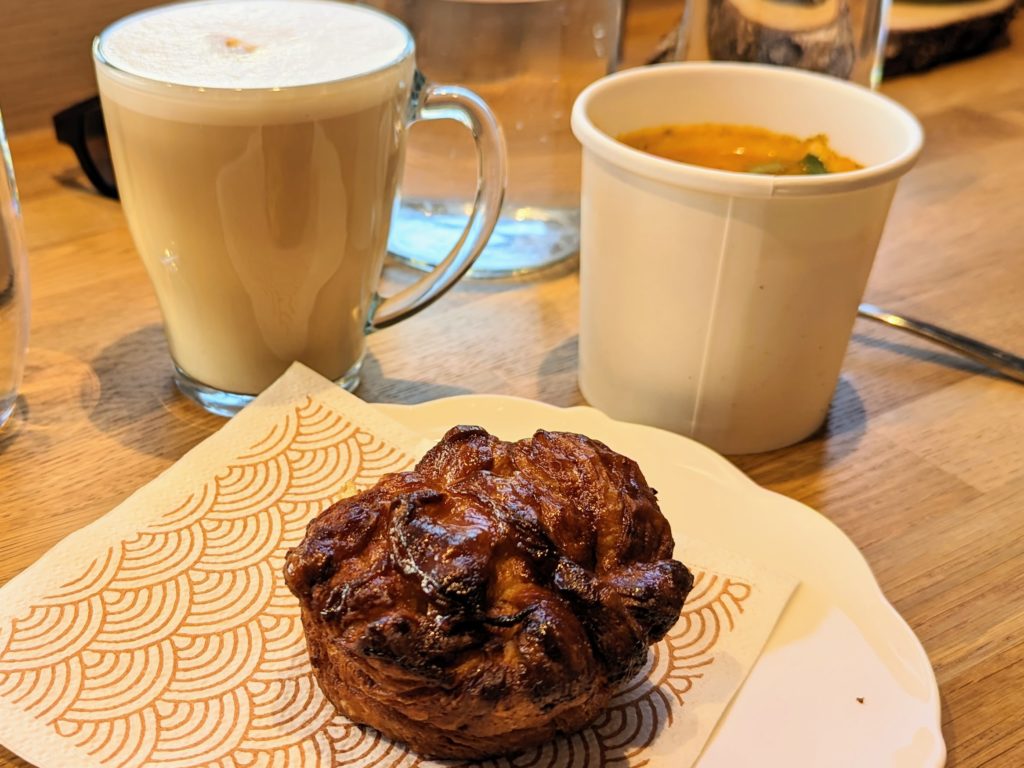
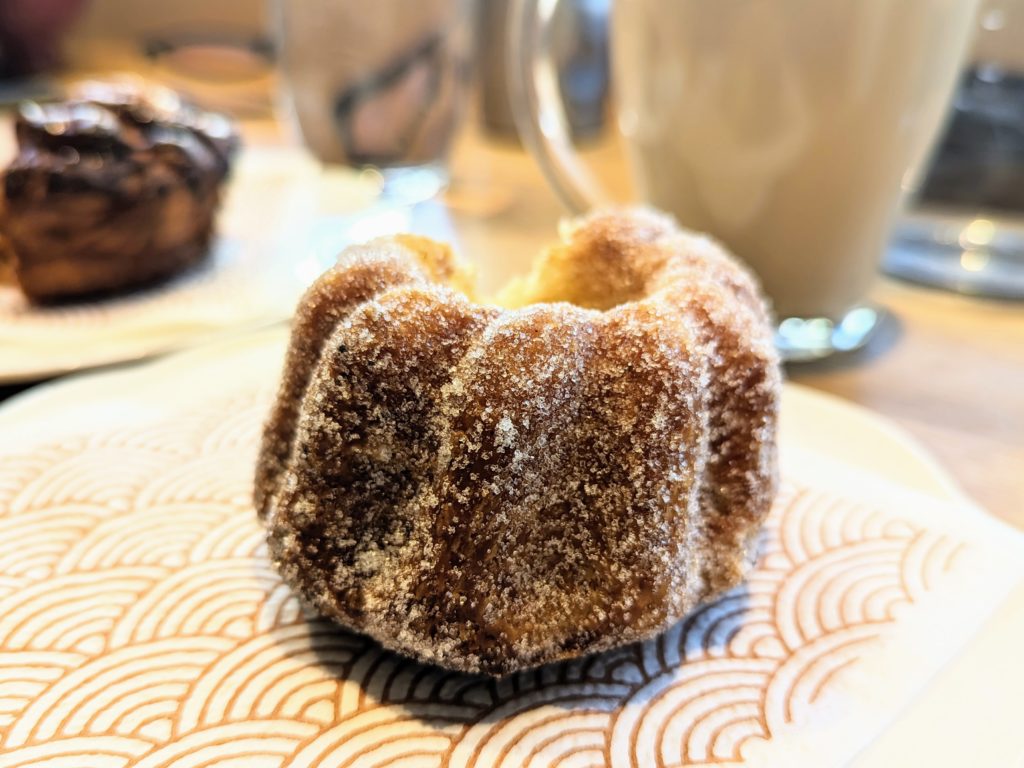
We ended up going to Caouette for lunchtime and so ended up ordering not only the famous Koulopf or Kougeltopf, which is the French word for a bundt cake that is famous for the region, but also an organic carrot-fennel soup and another pastry that was even better than the Kouglopf. It is called a Kouign-Amann and originates from the Bretagne. It is a round multi-layered cake, crunchy from the outside and soft from the inside. Originally made with bread dough, it is similar to the German Franzbroetchen.
Visit the hospital wine cellar

Cave Historique des Hospices is probably the most unusual wine cellar you will ever encounter, because you will find it right below the Civil Hospital. So head for the Hospital like you usually do when on a holiday and then walk to the backside. The cave is a little hidden, but definitely worth a visit. Also, because it houses the oldest white wine in the world. The cellar has been in operation since 1395. Guided tours are offered but are not mandatory. The entrance is free and you can purchase a bottle of wine at the end.
Discover Petite France
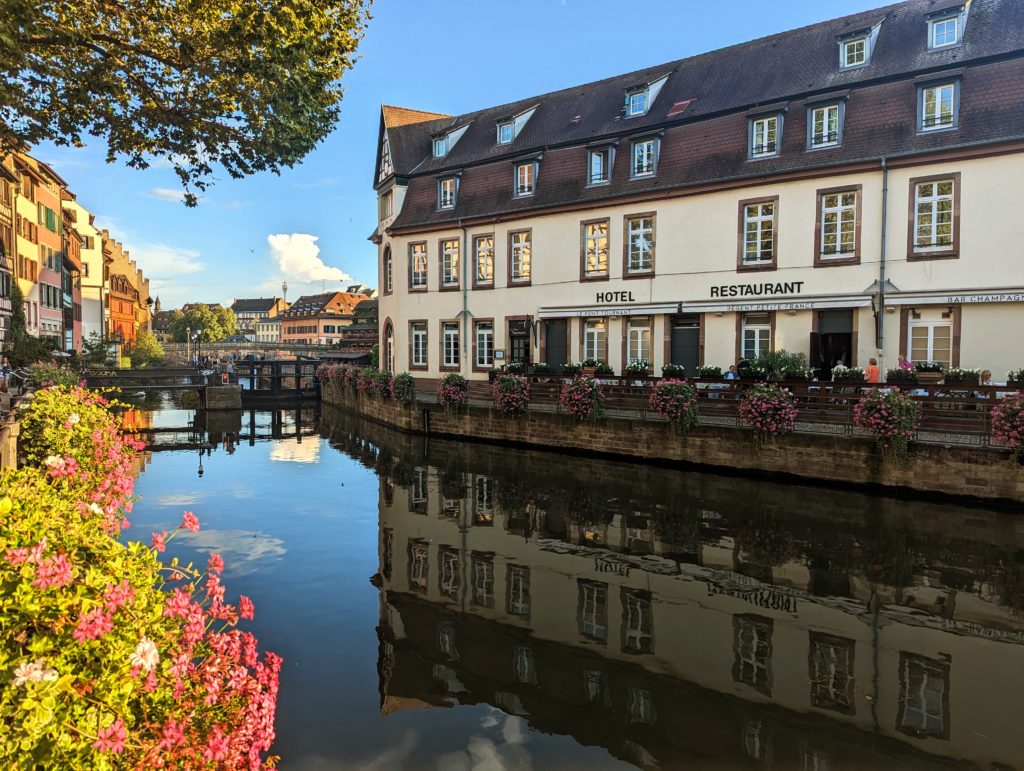
Petite France has a lot of traditional German looking houses with dark wooden beams in between the concrete and a lot of waterways similar to cities in the Netherlands, so in that way Petite France, unlike what the name suggests does not look like France at all. Nonetheless, this part of Strasbourg is certainly the most charming neighbourhood to walk through.
Walk over the Covered Bridges
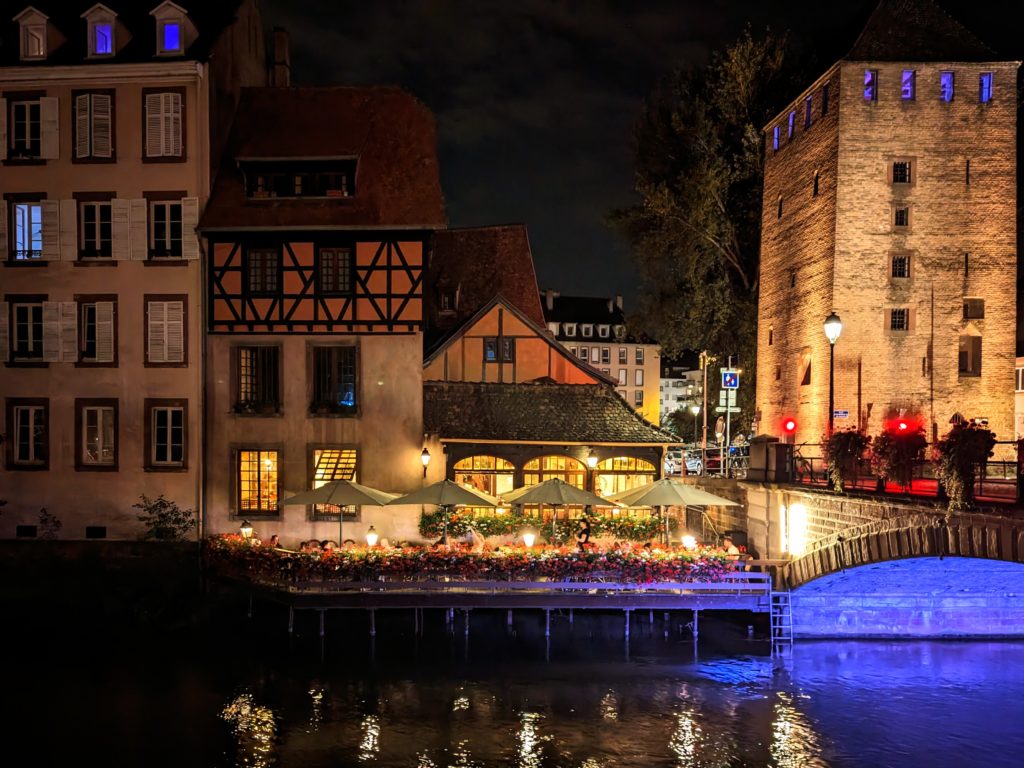
Cross the Ponts Couverts, the three fortified medieval bridges. Unlike what their name suggests, they are no longer covered. Originally these bridges were build as a rampart to strengthen the fortification of the waterways and were connecting 3 medieval towers.
Walk through Vauban Barrage
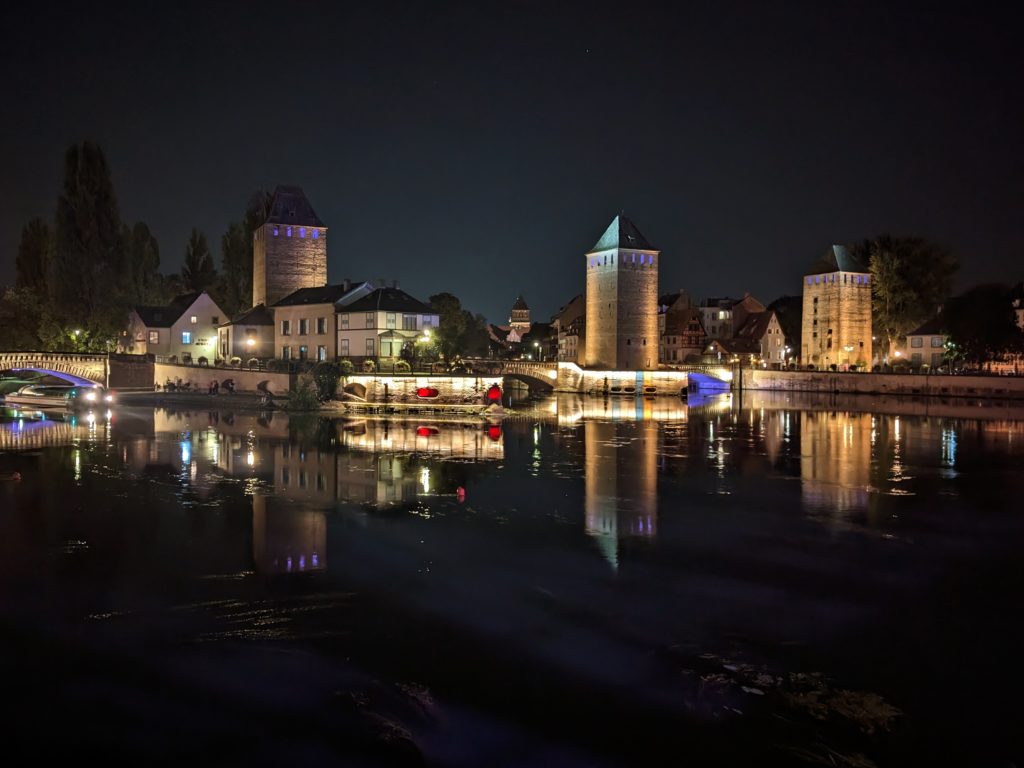
A few meters from the covered bridges you will find the 17th century stone bridge Barrage Vauban. It was build to protect the city when the covered bridges lost their usefulness due to the advancement of artillery. By clogging the arches of the dam, the Strasbourgers were able to raise the level of the III river and to create a flood in the surrounding fields to trap opponents in the mud. Cross the river by passing inside the dam and make sure to climb in the roof and enjoy a nice view over Petite France.
Have Dinner in an Alsatian Winstub
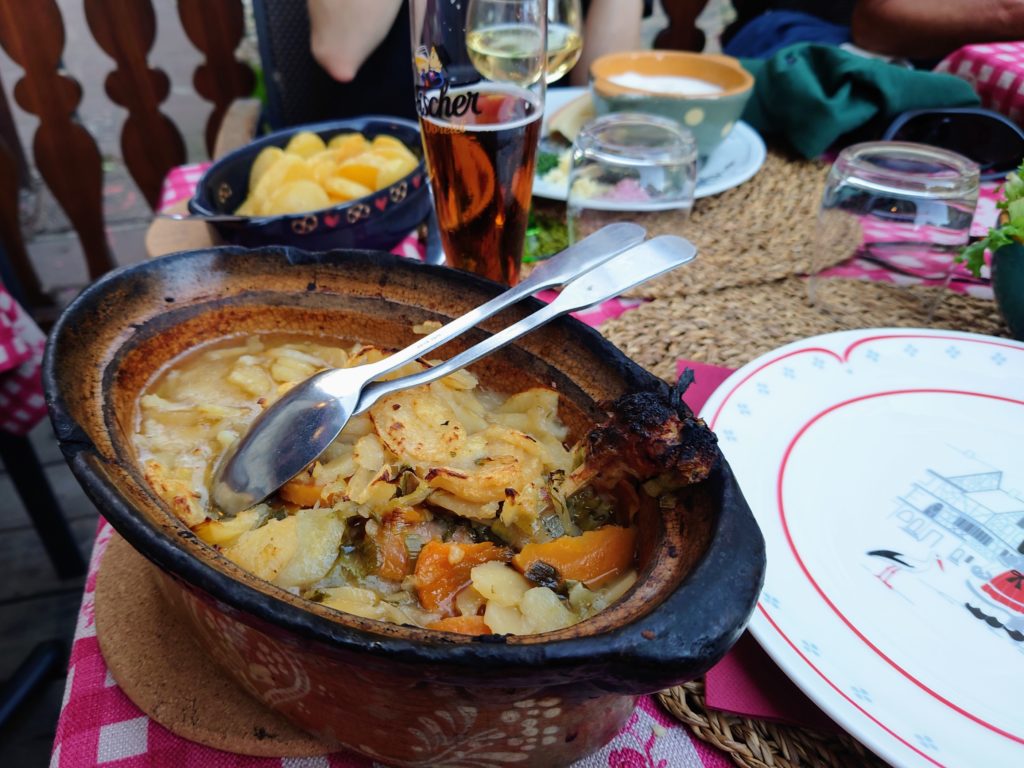
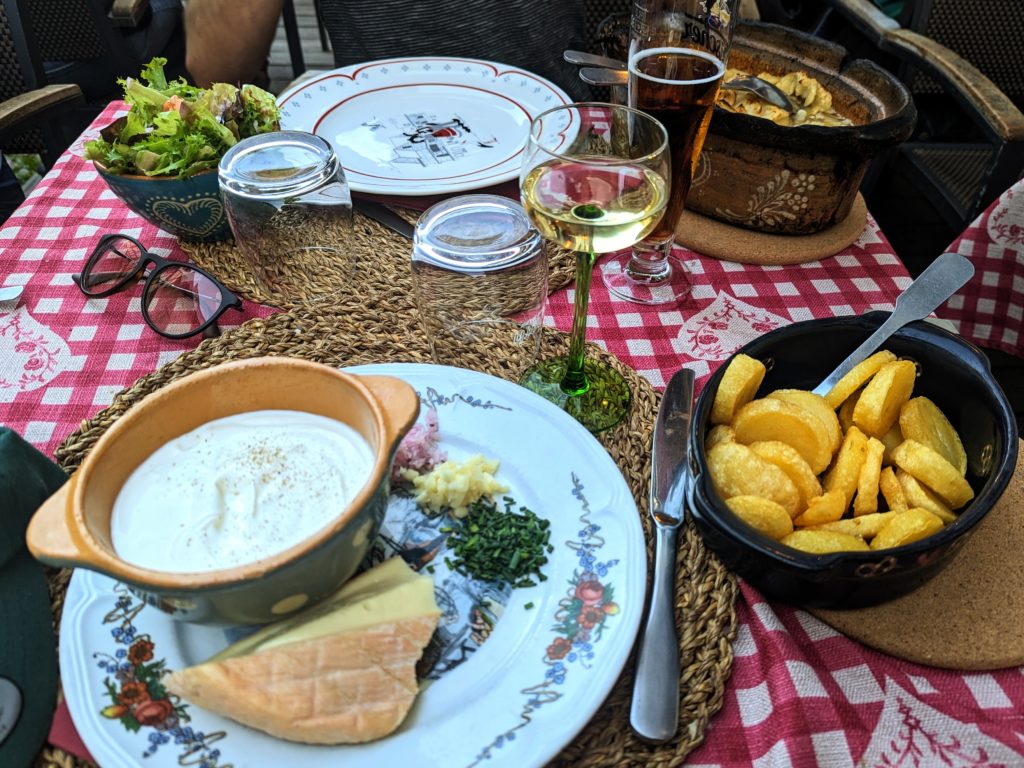
Traditional Alsation restaurants are called winstub and in Petite France you will find lots of them. Enjoying a nice dinner with some French wine in a winstub is the perfect way to end your day in Strasbourg. Try sauerkraut, flammkuchen, baeckeoffe (first pic) or bibeleskäs (second pic). Bibeleskäs is a dish that was traditionally used to feed chicks and consists of potatoes and the local Munstar cheese that you dip in quark. For our dinner we went to Le Baeckeoffe d’Alsace and despite the mixed reviews online, we really enjoyed our evening there.
If you have more time available in Strasbourg, you might consider one of the following activities:
- Alsatian Musuem: if you want to learn more about the daily life in the Alsace region during the 18th and 19th century, then this is the museum for you. It has a collection of historic furniture, costumes and decorations
- Palais Rohan: Palais Rohan houses the Archeological Museum (basement), the Decorative Arts Museum (ground floor) and the Museum of Fine Arts (first and second floor). If you want to visit Palais Rohan and the Alsatian museum, consider getting the Museum Pass
- Botanical Garden: located outside the city center in the Neustadt Area, the botanical garden boasts 6000 different plant species and an arboretum
- Museum of Modern and Contemporary Art: includes pieces by Monet, Picasso and Brauner and stunning street art right on its building’s walls
- Boat Tour: you can take a boat tour on the canals. The departure is at the foot of the Rohan Palace with the Batorama company. There are both covered and uncovered boats available.
- Shopping: the streets you want to look for are the streets around Grandes Arcades and the Franc-Bourgeois
- Bike Tour: 500km bike paths await you in Strasbourg. You can try the Forts Trail (“la piste des forts”), an 85 km bike tour that will take you along the Rhine river
- Take a walk in the Orangerie Park: it’s the oldest and largest park and a great place to do a run, canoe, have ice-cream or observe the many storks that are living in the park.
- Take the European walk: Close to the Orangerie Park you will also find the European Parliament, the Council of Europe and the European Court of Human Rights. Have we mentioned that Strasbourg is considered to be the Capital of Europe? You can take a ‘Parcour’s d’Europe’ route to discover them all on a 2.5 hour walk. You will pass by many explanatory panels and installations explaining its significance.
If you are also going to visit Paris during your France trip, then we have the best food, fashion and book places for you to visit.
If you want to combine this city trip with a unique hiking experience through the Black Forest in Germany, which is just one hour away from Strasbourg, then check out our Black Forest – Zweitälersteig itinerary as well.
